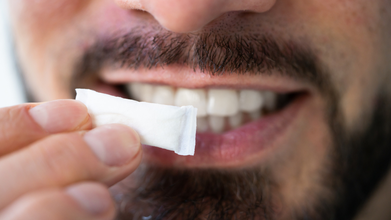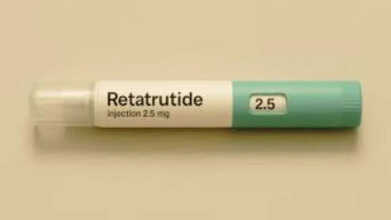- Health Conditions A-Z
- Health & Wellness
- Nutrition
- Fitness
- Health News
- Ayurveda
- Videos
- Medicine A-Z
- Parenting
What Is The Rare Neurological Disorder Guillain Barre Syndrome?

Credits: Canva
The first month of the year 2025 unfortunately welcomed a new neurological disorder in India. This is Guillain Barre Syndrome (GBS). It was in the last month when a school teacher in Pune noticed her six-year-old son struggling to hold a pencil. At first she assumed it is just his frustration with his homework. However, later, this very thing turned out to be the first sign of GBS, a rare neurological disorder where the immune system mistakenly attacks nerve cells. This then leads to muscle weakness, paralysis and even respiratory failure.
Within a few days, her son was admitted in a hospital, put under intensive care and was unable to move, swallow, or breathe without ventilator support. The good thing is that he is now recovery, however, there are many more such who fell under the blanket of this sudden outbreak of GBS.
What Is GBS?
GBS symptoms include tingling in the hands and feet, followed by muscle weakness and difficulty moving. Symptoms often worsen for two to four weeks. In severe cases, it can result in full paralysis and difficulty breathing, with a death rate ranging from 3% to 13% depending on access to medical treatment.
In recent months, Pune has reported over 160 cases of GBS, with five deaths suspected. Currently, 48 people are in critical condition, 21 are on ventilators, and 38 have been released. The outbreak is being linked to Campylobacter jejuni, a foodborne pathogen that has been identified as a leading cause of GBS worldwide.
What Is The Link Between Campylobacter and GBS?
Campylobacter is a bacterium that is frequently found in raw chicken, contaminated water, and poor food handling procedures. In the 1990s, researchers discovered a link between it and GBS in rural China, when children were exposed to contaminated water during the monsoon season.
Experts believe that Campylobacter infections are more likely to produce GBS in countries with poor sanitation, whereas respiratory infections are more frequent in high-hygiene areas. In 2015, Brazil reported an increase in GBS cases associated with the Zika virus, whilst COVID-19 vaccinations were related to a limited number of GBS infections in the United Kingdom.
Is GBS Rare?
Although Campylobacter is widespread, only 1 in 100 strains carry the molecular structure which can trigger GBS. Among the people infected with this rare strain, only 1 in 100 will develop GBS, and so the overall risk will be 1 in 10,000.
This phenomenon is known as molecular mimicry. Some Campylobacter strains have a sugar-coated outer layer that resembles human nerve cells. When the immune system attacks the bacteria, it may mistakenly destroy nerve cells as well, leading to GBS. Scientists believe that a particularly aggressive Campylobacter strain is currently circulating in Pune, causing an uptick in cases.
Is There Any Cure?
For now, there is no cure to this, however there are ways to manage it. Many physicians use plasma exchange to remove harmful antibodies from the blood. Antibody treatment with intravenous immunoglobin can also reduce the severity of disease.
The World Health Organization too has stepped in to investigate the outbreak. For now, experts have urged the public to not panic and ensure that they are taking all safety and hygiene precautions in consuming water and food.
Fact Check: Are Nicotine Pouches Safer Than Smoking?

Credit: iStock
Nicotine pouches have become popular in the UK, show many studies, this is especially true in the case of young adults.
In fact, a new study done by the researches from University College London (UCL) has found that in the last five years, there has been an increase from 0.1 per cent to 1 per cent of adults using nicotine pouches. This means, around 522,000 more people in the UK have started using the pouches.
How Does A Nicotine Pouch Work?
The pouches are placed between the lip and gum and it releases nicotine slowly. The pouches are also available in variety of flavors, with sweeteners and plant-based fibers. It does not contain tobacco like vapes do and usually are considered to be a healthier alternative to smoking.
Health and Me ran a fact check on whether it truly is safer than smoking, and here is what we found.
Are Nicotine Pouches Safer Than Smoking?
"This risks are substantially less than some other nicotine products like smoking, because there is no tobacco and there is no combustion," said Dr Harry Tattan-Birch, the lead author of the study, to Mornings with Ridge and Frost.
"And we know the combustion of tobacco is the thing that causes most of the diseases related to smoking," he says.
However, he and his team has warned that while it may not cause serious illness like tobacco can, young people could have a negative impact in their lungs and brains, as they are still in developing stage. This makes them more sensitive to the effects of nicotine, and it could become difficult to stop using it.
A UCL research fellow earlier told Sky News that while nicotine pouches are far less harmful than smoking, their long-term effects remain unclear because they are relatively new. Drawing on what is known about their contents, she noted they are not risk-free, as users are still exposed to some toxic substances, albeit at much lower levels.
Who Are Using These Nicotine Pouches?
Researchers from UCL, supported by Cancer Research UK, analysed survey responses from 127,793 people aged 16 and above across England, Scotland and Wales, collected between October 2020 and March 2025.
Their analysis showed that nicotine pouch use among 16 to 24-year-olds rose to 4% in 2025, up from just 0.7% in 2022. The increase was most pronounced among young men, with one in 13 men in this age group, or 7.5%, reporting use.
Overall, men accounted for 72% of nicotine pouch users between 2022 and 2025, while 47% were under the age of 25. Dr Tattan-Birch said the growth in use has been driven almost entirely by young people, particularly young men, with usage among adults over 35 remaining low and largely unchanged.
He added that this trend also includes children. Since nicotine pouches are not classified as tobacco or vape products, there are currently no age limits. Advertising is also unrestricted, allowing brightly coloured, sweet-flavoured products to appeal to younger audiences.
Do Nicotine Pouches Help Quit Smoking?
The research found that 69 per cent of pouch users were reported using other nicotine products, while 56 per cent of them smoked, as per the survey from January 2022 to March 2025.
1 in 6, which makes it 16 per cent said they never regularly smoked. "Whether nicotine pouches are good or bad for public health depends on who is using them. If it's a young person who would otherwise start smoking, then the use of pouches might help to reduce harm. However, if it's a person who otherwise would not use nicotine at all, then the potential for harm increases," said Tattan-Birch.
Can A Cyst Grow Teeth And Hair Inside The Body? Everything You Need To Know About Dermoid Cysts

Credits: canva
A woman experiencing abdominal discomfort went to her gynecologist for an ultrasound, only to discover something far more startling than a baby. The mom, who shares her story on TikTok under the handle @sandwitchbread, revealed her medical surprise in a video that has now amassed over 1.9 million views. She said she had been struggling with pain and unusual bleeding since giving birth to her two-year-old son and decided to see a gynecologist fearing she might be pregnant again.
During the ultrasound, she noticed something on the screen, but the doctor quickly reassured her it wasn’t a baby. “When my doctor came in to share the results,” the TikToker recalled, “she looked me in the eyes and told me I had a seven-centimeter cyst, about the size of a chicken egg, called a dermoid cyst.”
What Is A Dermoid Cyst?
A dermoid cyst is a pocket of tissue growth that can contain normal body tissues, sometimes including hair, fluid, teeth, or skin. While this TikToker’s cyst was in her uterus, dermoid cysts are most commonly found in the ovaries. They are generally harmless but often require surgical removal. According to the National Cancer Institute, dermoid cysts are present from birth but may not be detected until later in life. These benign tumors originate from embryonic cells that become “trapped” and develop into tissues in the wrong location. Teeth and hair are frequent components, and surgery is usually recommended if the cyst causes symptoms or complications.
Why Do Dermoid Cysts Have Hair and Teeth?
Dermoid cysts develop hair and teeth because they arise from trapped embryonic cells (ectoderm) that can grow into skin, hair follicles, sweat glands, and even teeth, instead of forming the tissues normally found in the ovary or skin. Essentially, they are benign tumors made up of mature but misplaced body tissues from the outer layer of the embryo, which normally forms skin and related structures.
Dermoid Cysts: Symptoms
Most ovarian dermoid cysts remain symptom-free unless complications occur. When symptoms do appear, the most common one reported is lower abdominal pain.
As the cyst enlarges, it can cause noticeable abdominal swelling and problems with the urinary or digestive system.
In more severe cases, individuals might also experience:
- Fever
- Intense abdominal pain
- Unusual vaginal bleeding
- Unexplained weight loss
The Office on Women’s Health notes that cysts on the ovaries can also cause:
- Pressure in the abdomen
- Bloating
- Abdominal swelling
- Pain in the lower abdomen
Dermoid Cysts: Possible Complications
Some potential complications include:
Rupturing of the cyst: Though rare, ovarian dermoid cysts can burst. If the cyst’s contents leak into the abdominal cavity, it may lead to chronic inflammation of the abdominal lining (peritonitis). In some cases, leakage into the intestines or rectum can result in the material being expelled through the anus.
Ovarian torsion: This occurs when the cyst twists the ligaments holding the ovary in place, which can cut off blood supply to the ovary and fallopian tube.
Infection: The risk of infection is around 1–4%. Severe infections may lead to cyst rupture.
Malignant transformation: Dermoid cysts are almost always benign, but in rare instances, they can become cancerous.
Is Retatrutide The Next Weight-Loss Breakthrough After Ozempic And Mounjaro? Here’s How It Works Differently

Credits: Canva
A new weight-loss drug often described as the “triple G” treatment because it mimics three hormones linked to hunger and metabolism has delivered striking results in fresh data shared Thursday by its developer, Eli Lilly. In a clinical study involving more than 400 people living with obesity and knee osteoarthritis, the experimental drug retatrutide led to an average weight reduction of 71 pounds, or close to 29% of total body weight, over a period of 16 months, according to figures released by the company. Participants who received retatrutide also reported a 76% drop in knee pain by the end of the study period, based on the same data. So is
What Is Retatrutide?
Retatrutide is an experimental weight-loss drug developed by Eli Lilly and is widely seen as a next-step advancement beyond current GLP-1-based medications such as semaglutide and tirzepatide. While semaglutide acts on a single hormone pathway and tirzepatide works on two, retatrutide targets three.
It activates GLP-1 and GIP, along with an added glucagon pathway, which is why it is sometimes informally referred to as a “GLP-3” drug. Researchers believe this third pathway could explain the greater weight-loss effects seen so far, although retatrutide remains under investigation and has not yet received FDA approval.
Why Is Retatrutide Trending?
Even without regulatory approval, retatrutide has gained attention among gym enthusiasts, fitness creators, and online weight-loss communities. On platforms like TikTok, where direct searches for #reta or #retatrutide are restricted, users often refer to it using coded terms such as “ratatouille.”
At the same time, the drug has been in the news due to growing concerns about counterfeit versions. Reports from the UK recently revealed that authorities seized more than £250,000 worth of fake weight-loss injection pens labelled as tirzepatide and retatrutide from a hidden factory in Northampton. These products are especially concerning because retatrutide is still in clinical trials and has not been approved for use anywhere in the world.
How Is Retatrutide Different Than Other Weight-Loss Drugs?
Retatrutide works by mimicking three hormones that play a role in appetite and metabolism: GLP-1, GIP, and glucagon. In contrast, most weight-loss drugs currently available target only one or two of these pathways. Ozempic and Wegovy, made by Novo Nordisk, copy the effects of GLP-1, a hormone that influences the brain, pancreas, stomach, liver, and muscles, according to the National Institutes of Health.
Mounjaro and Zepbound, on the other hand, act on both GLP-1 and GIP, a hormone involved in blood sugar regulation through insulin stimulation. Retatrutide’s added glucagon effect is key, as glucagon is known to support fat burning, even when the body is at rest. Ozempic and Mounjaro are approved by the FDA for treating Type 2 diabetes, while Wegovy and Zepbound are approved for people with overweight or obesity. As with any prescription drug, it is important for individuals to consult a healthcare professional to determine whether these treatments are appropriate for them.
When Is Retatrutide Expected To Be Available To Consumers?
There is currently no confirmed timeline for when retatrutide might become available by prescription. Its launch will depend on the FDA’s detailed evaluation of clinical trial data once it is formally submitted. Based on current expectations, approval is unlikely before late 2026 and could potentially extend into 2027 or even 2028.
© 2024 Bennett, Coleman & Company Limited

